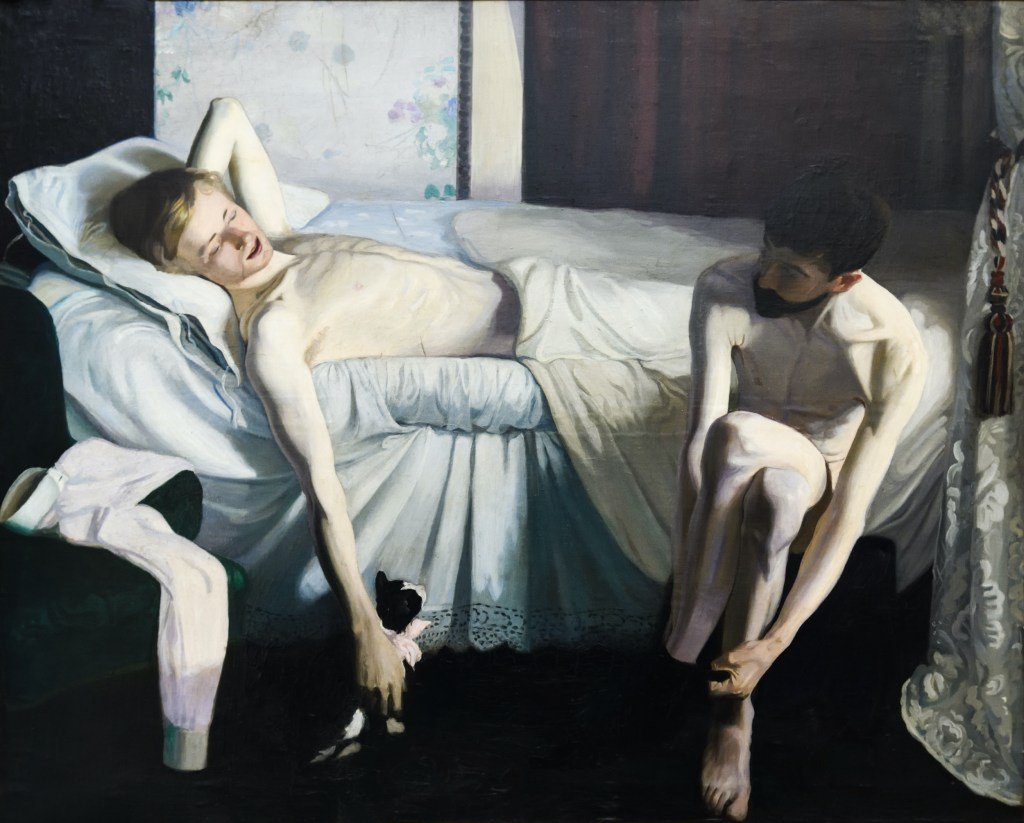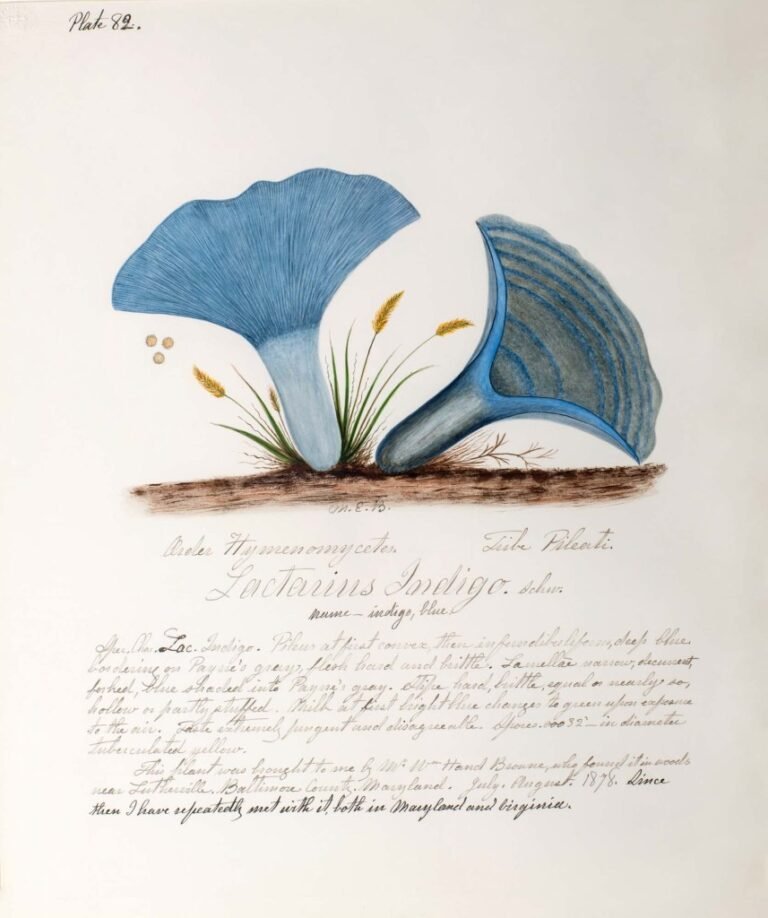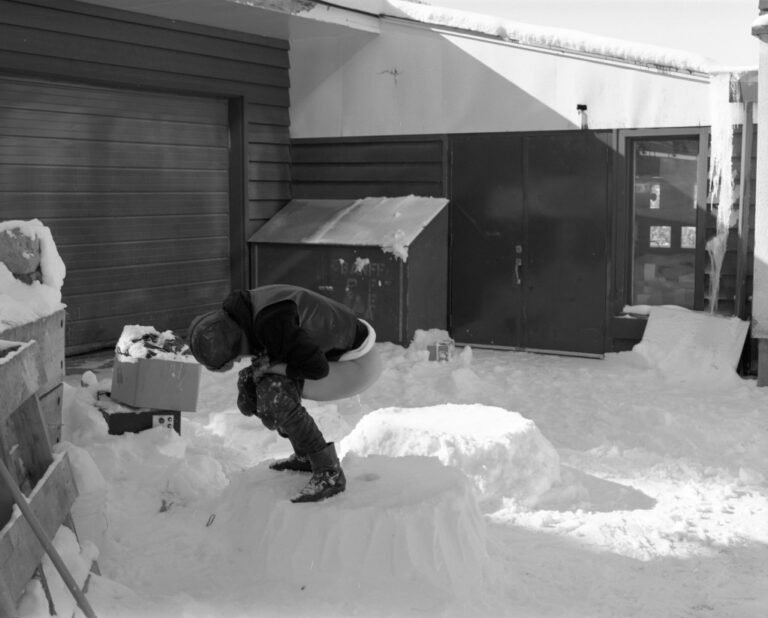

CHICAGO — The history of art, stated curator Jonathan D. Katz, “is both the world’s largest archive of the history of sexuality and its least tapped.” This may be a good place to begin to unpack the immense, important, ambitious, challenging, and intellectual exhibition The First Homosexuals: The Birth of a New Identity 1869–1939 at Wrightwood 659.
The exhibition is dissertation length, with 300 works by 125 artists from 40 countries. It begins in the late 19th century to mark the 1869 coining of the term “homosexual” by Hungarian journalist Karl Maria Kertbeny. Why is this a benchmark? The show’s didactics explain that once a categorical definition of a person based on sexual orientation was codified, the idea of gender fluidity, sexual choice, and what might be considered simply expansive appetites carried new weight. Sexual choice became personal identity — an either/or thing that limited the full, more subtle range of human attraction.

This imposition of a binary (homosexual/heterosexual) pushed gay culture further into the persecuted margins, with pockets of communality forming in subcultures of bohemian circles and European salons. The art world’s avant-garde offered fertile ground to both covertly and overtly express aspects of same-sex relationships. The scale of the exhibition allows for a nuanced look at this under-researched record— a trail that visits big and bold Gertrude Stein in Paris (a portrait by Félix Vallotton), the bushy-bearded Walt Whitman in the United States (portrayed by Herbert Gilchrist, one of his lovers), luridly lovely French neoclassical painter Gustave Courtois, Thomas Eakins’s wrestlers, Romaine Brooks’s hauntingly confident portraits, Madeleine-Jeanne Lemaire’s show-stopping reclining nude, “Le Sommeil de Manon” (Manon’s Sleep) (c. 1906), and Swedish artist Ida Matton’s loving plaster busts of herself and her opera singer partner, Elyda Russell. This trail dips and weaves through personal and cultural histories, through socially taboo trysts and outlandishly staged camp.
This complex project came together over six years, with Katz and associate curator Johnny Willis obtaining loans from more than 100 international museums and individuals and gathering input from 22 scholars. Despite its weighty academic ambitions, the show’s atmosphere remains personable, quiet, steamy, and sizzling — diffuse with a sense of urgency to document this queer history against increasingly aggravated societal and governmental threats of erasure.

The show begins with work predating the 1869 term “homosexual” in the section “Before the Binary.” Here, paintings such as Henry Fuseli’s “Heavenly Ganymede” (1804) reveal the neoclassical use of Greek and Roman myth to mask or re-frame the erotic. Seven additional sections structure passage through the three densely hung floors of the private, Tadao Ando-designed museum. Processing it all can be a challenge. Most labels are weighted with useful background, requiring slow consumption. It’s important to know, for example, that the sensitive, masculine portrait of the famous 19th-century painter Rosa Bonheur was created by her partner, American artist Anna Klumpke, as well as the fact that “when Klumpke died in 1942, she was buried with Bonheur and her prior lover, Nathalie Micas ….” Nearby, also in the sections of portraits, we learn about the artist Nasta Rojc, who depicts herself in hunting clothes, toting a musket. The label explains that while on a sailing excursion, she met her lifelong partner, Alexandrina Onslow, a British army officer. They were both later imprisoned as anti-fascists during World War II. This anecdotal material humanizes the larger conceptual framework the way a good novel lavishes over the details.
I found myself navigating from anecdote to image, appreciating but not needing the context of the unfolding themes. The atmosphere in the galleries felt comforting, as it offered respite from political hostilities and threats. This validation that the art world has indeed provided a visual history of determined defiance could not come at a better time.

Several academic through lines provide additional structure. The curators propose that once the term “homosexual” came into widespread usage, it diminished understandings of more complex expressions of sexual desire. The expansive language of art could absorb these denuded subtleties. They also note that while nubile adolescents were frequently depicted in art because of their indeterminate gender traits, stronger binary definitions gave rise to he-men, bodybuilders, and masculinized notions of queer identity. One example would be Osmar Schindler’s “Muskelspiel” (Muscle Play) (1907), showing a flexing weightlifter surrounded by gamine lads. The show further asserts that colonizers justified conquest of some Indigenous populations in part by demonizing their less rigid demarcations of gender. Those societies fought back with images that challenged culturally ingrained gender presentations, such as Daniil Stepanov’s “Bacha boy” (1923), depicting the Islamic tradition of servant boys in feminine roles.
Seeing a Marsden Hartley painting of four naked lads in a Finnish sauna is a pleasure in any museum, for sure, but seeing it among its brethren, woven within storylines of soirees, chosen families, inventive identities, and stolen moments, solidifies the idea that taxonomies deny the richness of identity. In this exhibition, the garden of choice blooms in celebratory, assertive, and sometimes humorously over the top form, such as the delightful “The Bathers” (1926–33) by Duncan Grant, a fleshy stream-side male utopia, or the tender painting by Louise Abbéma of herself and partner Sarah Bernhardt in a boat amid white and black swans (1883), a reference to their chosen otherness.

To the curators’ credit, the show does not shy away from complex truths. For example, the German artists Elisár von Kupffer and partner Eduard von Mayer created hundreds of paintings in a self-styled temple of queer art in Switzerland (now a museum). They believed that a gender binary was a perversion of divine will. They were also Hitler supporters and White Supremacists.
The exhibition’s profound will to concretize the normative choice of same-sex desire, as well as its refusal to water down explicit content (i.e., a section of erotica, a graphic painting of four friars having an orgy by Alessandro Magnasco from the early 18th century, the enormous and active phalluses of Japanese “shunga” illustrations, a Chinese silk painting c. 1910–20 of two young men masturbating), makes it too hot to travel. No museum in the country would host it, even when exhibition fees were waived. “In the 30 plus years I’ve been doing this,” said Katz in an email, “I’ve rarely seen even flashes of courage at major museums. The art world pretends to value innovation, but that’s pure illusion. Conformity, even critical consensus, is the true currency. Neither feminist nor queer art have had their day in the sun, and especially so when they’re conjoined.” Hopefully, public libraries will stock the 200-page catalog.
Sadly, what these other museums seem to be missing is the show’s broader message — the cultural imposition of values on humanity. The underlying thesis is ultimately about control and how the art world has long been a bedrock for maintaining freedoms. A gorgeous reclining nude self-portrait by Florine Stettheimer says it even better in oil paint, if you read between the lines: “Here I am, fully celebrating the life I’ve chosen and I’m not hiding.”







The First Homosexuals: The Birth of a New Identity, 1869–1939 continues at Wrightwood 659 (659 West Wrightwood, Chicago, Illinois) through August 2. The exhibition was curated by Jonathan D. Katz and Johnny Willis.


